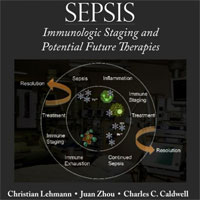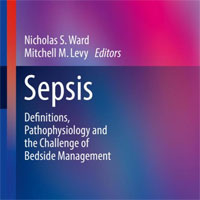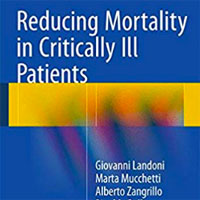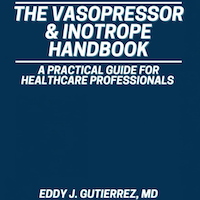Tag: ventilator
Prone Positioning for a Morbidly Obese Patient with ARDS
Since the description in the 1970s of external positive end-expiratory pressure for acute respiratory distress syndrome (ARDS), the optimum level of external positive end-expiratory pressure remains unresolved. In the 1990s,... read more
Lumping or Splitting in Pediatric ARDS
Improvements in acute respiratory distress syndrome (ARDS) outcomes in adults have been achieved along-side demonstration of the superiority of low-tidal volume ventilation, the relative advantage of a restrictive fluid strategy... read more
SOS Asynchronies: Do We Need Help?
Synchrony between the patient and the ventilator is defined as the appropriate interaction between the two, where the ventilator recognizes patient’s effort and provides support for breathing at the right time—that is,... read more
Oxygenate, Ventilate, Do No Harm
Emergency physicians (EPs) are experts in emergent airway management and thus must be confident managing mechanical ventilation. Hospital-wide bed shortages mean that EPs will be managing admitted patients for longer periods... read more
Positive End-Expiratory Pressure Lower Than the ARDS Network Protocol Is Associated with Higher Pediatric ARDS Mortality
Patients with PARDS managed with lower PEEP relative to FiO2 than recommended by the ARDSNet model had higher mortality. Clinical trials targeting PEEP management in PARDS are needed. This was a multicenter, retrospective... read more
Neurally adjusted ventilatory assist
Several studies nowadays prove the physiological benefits of neurally adjusted ventilatory assist, as opposed to the conventional modes of partial support. Whether these advantages translate into improvement of clinical outcomes... read more
Automated System Detects Risk of VAP
Approximately 50 percent of all patients receiving mechanical ventilator support develop ventilator-associated pneumonia (VAP). Researchers at Massachusetts General Hospital (MGH) have developed an automated system for identifying... read more
Weaning from the Ventilator and Extubation in ICU
Current research is focusing on preventing extubation failure, especially in the most challenging cases. The use of weaning protocols – written or computerized – attempts to early identify patients who are able to breathe... read more
Simplifying Mechanical Ventilation
Mechanical Ventilation is a modality commonly used in the critically ill, but many providers, may not have a strong understanding of the basics. Emergency Medicine and Critical Care Physicians need to have a firm grasp of... read more
Management of the Traumatized Airway
There is a lack of evidence-based approach regarding the best practice for airway management in patients with a traumatized airway. Airway trauma may not be readily apparent, and its evaluation requires a high level of suspicion... read more
Prone Positioning of ARDS Patients
A prospective international observational prevalence study on prone positioning of ARDS patients: the APRONET (ARDS Prone Position Network) study. While prone positioning (PP) has been shown to improve patient survival in... read more
Trends of Incidence and Risk Factors of VAP in Elderly Patients Admitted to French ICUs
This study assesses trends and risk factors of ventilator-associated pneumonia (VAP) according to age, particularly in the elderly admitted to French ICUs between 2007 and 2014. Ventilator-associated pneumonia incidence is... read more
REPROVE: Ceftazidime-avibactam Noninferior to Meropenem for Nosocomial Pneumonia
Ceftazidime-avibactam was noninferior to meropenem for nosocomial pneumonia including ventilator-associated pneumonia (VAP) from gram-negative organisms, results from the REPROVE trial demonstrated. Nosocomial or hospital-acquired... read more
Early Mobility in Critically Ill Patients
Kyle Enfield, MD, speaks with Wes Ely, MD, MPH, about his talk presented at the Multiprofessional Critical Care Review: Adult course in Rosemont, Illinois entitled, "Early Mobility in Critically Ill Patients: More to Come."... read more
FDA Approves Treatment of Patients with Hospital-Acquired Bacterial Pneumonia and Ventilator-Associated Bacterial Pneumonia
FDA has approved Allergan's supplemental New Drug Application (sNDA) to expand the approved use of AVYCAZ® (ceftazidime and avibactam) to include the treatment of hospital-acquired bacterial pneumonia and ventilator-associated... read more
My ICU Patient Lived. Is That Enough?
As many as one in three patients sick enough to require a ventilator might develop symptoms of post-traumatic stress disorder. Anxiety and depression are equally common, if not more so. Others survive critical illness but... read more
The Overlooked Danger of Delirium in Hospitals
The condition, once known as "ICU psychosis," disproportionately affects seniors and those who have been heavily sedated—and the delusions can last long after they're discharged. Patients treated in intensive-care units... read more
Risk Factors for Ventilator-Associated Events in a PICU
There is an association between ventilator-associated condition and infection-related ventilator-associated complication in critically ill children with acute kidney injury, ventilatory support, and neuromuscular blockade.... read more
Comparison between a nurse-led weaning protocol and weaning based on physician’s clinical judgment in tracheostomized critically ill patients
In this pilot RCT we demonstrated that a nurse-led weaning protocol from tracheostomy was feasible and safe. A larger RCT is justified to assess efficacy. We enrolled 65 patients, 27 were in the protocol group and 38 in the... read more
Neural Breathing Pattern and Patient-Ventilator Interaction During Neurally Adjusted Ventilatory Assist and Conventional Ventilation in Newborns
Patient-ventilator interaction appears to be improved with neurally adjusted ventilatory assist. Analysis of the neural breathing pattern revealed a reduction in central apnea during neurally adjusted ventilatory assist use.... read more
Gas Exchange in ARDS
Acute respiratory distress syndrome (ARDS) is characterized by severe impairment of gas exchange. Hypoxemia is mainly due to intrapulmonary shunt, whereas increased alveolar dead space explains the alteration of CO2 clearance.... read more
Validation of the Vasoactive-Inotropic Score in Pediatric Sepsis
Secondary retrospective analysis of a single-center sepsis registry. Vasoactive-Inotropic Score in pediatric sepsis patients is independently associated with important clinically relevant outcomes including ICU length of... read more









